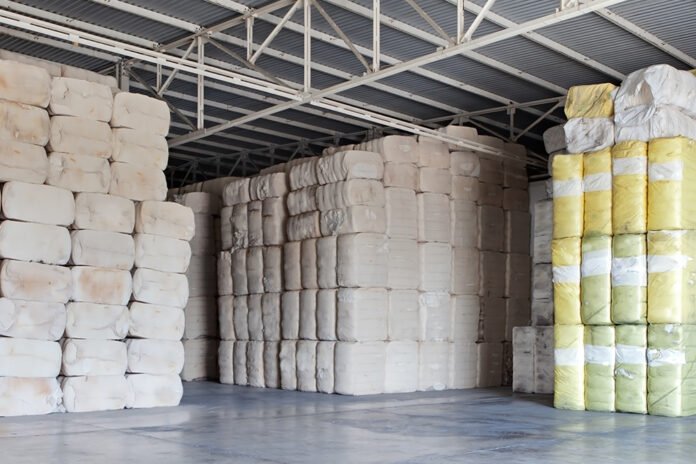Pakistan produced 14.5 million cotton bales about a decade back. Production has been constantly on the decline after that. This year cotton production slumped to 4.8 million bales only.
The crop was 2.9 bales shorter than last year. A decade back the local mills consumed 16-18 million bales and the industry used to import 1.5-2 million bales. Cotton consumption in Pakistan also declined to 13-14 million bales. After this year’s crop failure, the industry would have to import around 7 million bales. Some bigger players have already placed orders for 5 million bales. Most placed orders when the global cotton prices were high and would find it hard to recover costs on prevailing yarn rates. The prices have come down from $1.20 per pound to $0.85 per pound.
The spinning industry is already operating at 50 percent capacity due to a shortage of cotton as well as the reluctance of weavers to lift yarn stocks that have piled up in mills. Cotton prices in the domestic and international cotton markets are now stable. But the business volumes are also low.
The latest USDA report featured decreases in global production (-1.6 million bales to 116.4 million) and mill-use (-600,000 bales to 114.9 million). Small updates to historical figures lifted 2022/23 beginning stocks 380,000 bales (to 85.6 million). The net result for 2022/23 ending stocks was a -600,000 bale decrease (to 87.3 million). This ranks as the highest volume since 2019/20 (98.4 million bales). Excluding 2019/20 (onset of COVID), the 2022/23 forecast ranks as the highest since 2015/16 (91.5 million bales), when China was destocking reserves.
At the country level, the largest updates for production included reductions for Pakistan (-700,000 bales to 4.5 million), Australia (-500,000 bales to 5.5 million), Mali (-230,000 bales to 1.2 million), Burkina Faso (-185,000 bales to 1.0 million), and Cote d’Ivoire (-170,000 bales to 830,000). U.S. production was revised higher (+219,000 bales to 14.0 million).
The global trade estimate fell from -400,000 bales to 43.2 million. In terms of imports, the largest changes were for Pakistan (+700,000 bales to 5.0 million), China (-200,000 bales to 8.5 million), and Bangladesh (-400,000 bales to 8.0 million). In terms of exports, the only change over 100,000 bales was for Mali (-200,000 bales to 1.2 million). The decline in China yarn imports has resulted in lowering cotton consumption in major yarn-exporting countries which include India, Vietnam, Pakistan, and Uzbekistan. China was the largest foreign market for each major yarn exporter in 2021.
In Pakistan, the appreciating dollar is an added headache for spinners and ginners that intend to import cotton. The problems are further aggravated due to the difficulties in opening Letter of Credit for import. Import from China is slow due to corona restrictions as well as the ban on the use of child labor tainted Chines cotton in exports to the United States.
Spinners in Pakistan are sitting on unsold yarn stocks and have slowed production. Ginners perhaps for the first time have piled huge stocks of quality cotton but there are no buyers. Both the textile mills and the ginners are facing a financial crunch due to unsold stocks. The textile industry, ginners and the people related to the cotton business are facing difficulties.
Global cotton traders predict a recession in the cotton market in the 2022-23 cotton season. Pakistani banks are reluctant to open L/C due to the strong increase in the value of the dollar. The importers are disturbed because their goods worth billions of rupees are stuck on the port. Afghani cotton has been spotted in the local market which is cleaner than Pakistani cotton. Afghan cotton production however is very low and makes no dent in the cotton market.




